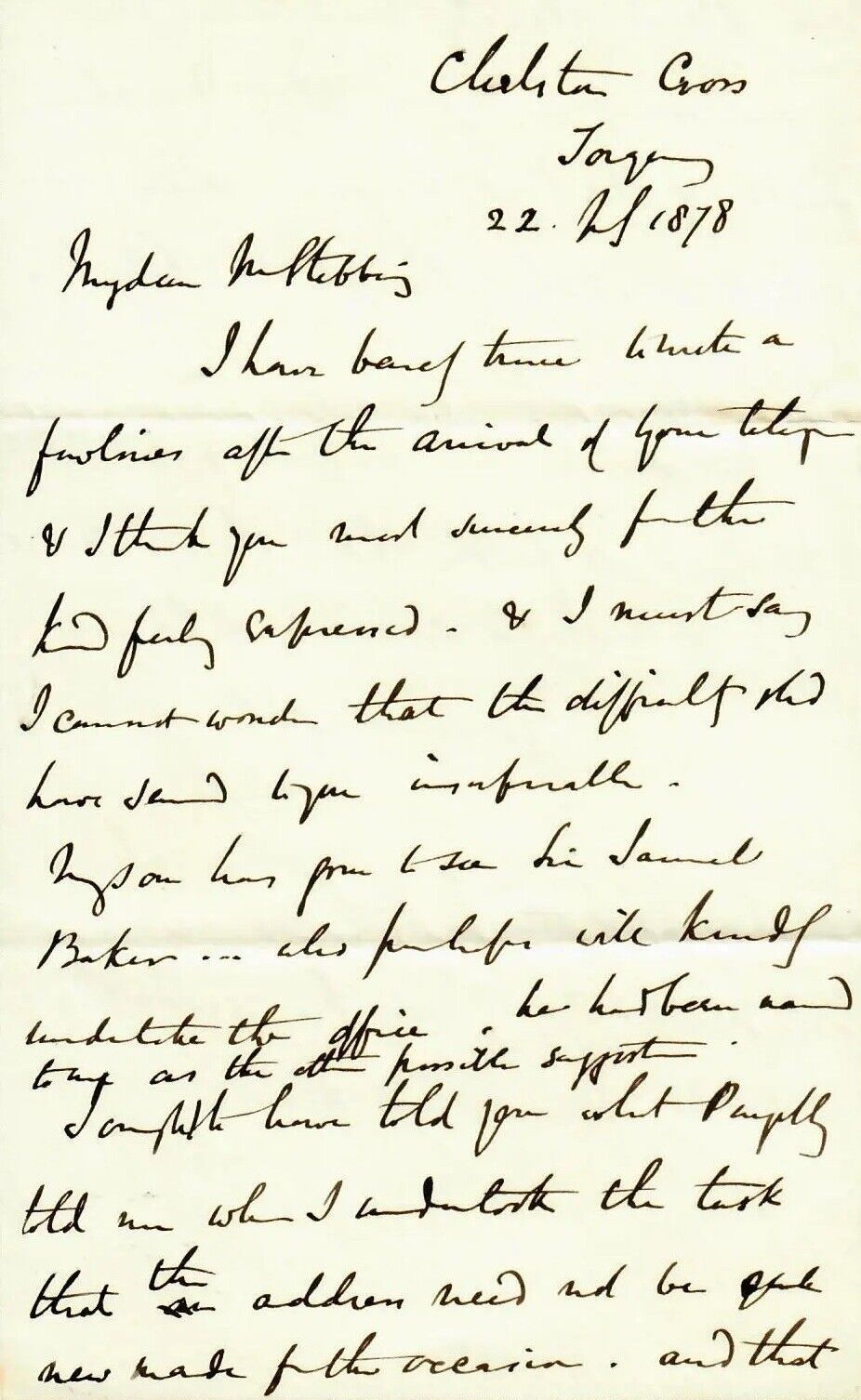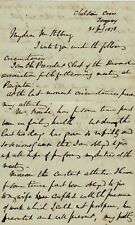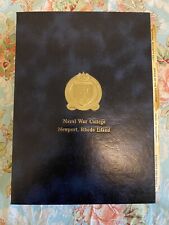RARE "Naval Architect" William Froude Hand Written 2 Pg Letter COA For Sale

When you click on links to various merchants on this site and make a purchase, this can result in this site earning a commission. Affiliate programs and affiliations include, but are not limited to, the eBay Partner Network.
RARE "Naval Architect" William Froude Hand Written 2 Pg Letter COA:
$599.99
Up for sale aRARE! "Naval Architect" William Froude Hand Written 2 Pg Letter Dated 1878.This item is certified authentic by Todd Mueller sales and comes with their Certificate of Authenticity.ES-983A
William Froude(/ˈfruːd/;28 November 1810 inDevon– 4 May 1879 inSimonstown, South Africa) was an English engineer, hydrodynamicist andnaval architect. He was the first to formulate reliable laws for the resistance that water offers to ships (such as thehull speedequation) and for predicting their stability. Froude was born atDartington, Devon, England, the son ofRobert Froude, Archdeacon of Totnes and was educated atWestminster SchoolandOriel College, Oxford, graduating with afirstin mathematics in 1832. His first employment was as a surveyor on theSouth Eastern Railwaywhich, in 1837, led toBrunelgiving him responsibility for the construction of a section of theBristol and Exeter Railway. It was here that he developed his empirical method of setting outtrack transition curvesand introduced an alternative design to the helicoidalskew archbridge atReweandCowley Bridge Junction, nearExeter. During this period he lived inCullomptonand wasVicar's Wardenat St Andrew's Church from 1842 to 1844. He organised, and paid a large amount to the rebuilding of thechanceland other restoration work. He also offered to pay to restore thenaveif local people would pay 10% of the cost but this offer was refused. On completion of the Bristol to Exeter line in 1844 he left the town. At Brunel's invitation Froude turned his attention to the stability of ships in a seaway and his 1861 paper to theInstitution of Naval Architectsbecame influential in ship design. This led to a commission to identify the most efficient hull shape, which he was able to fulfil by reference to scale models: he established a formula (now known as theFroude number) by which the results of small-scale tests could be used to predict the behaviour of full-sized hulls. He built a sequence of 3, 6 and (shown in the picture) 12 foot scale models and used them in towing trials to establish resistance and scaling laws. His experiments were vindicated in full-scale trials conducted by theAdmiraltyand as a result the firstship test tankwas built, at public expense, at his home inTorquay. Here he was able to combine mathematical expertise with practical experimentation to such good effect that his methods are still followed today. Froude also tested the "wave-line" theory ofJohn Scott Russell. The modelRavenhad sharp lines in accordance withScott Russell's theory. TheSwanhad fuller lines with blunt ends.Ravenhad less resistance at low speeds of the two, butSwanhad less resistance at higher speeds. This showed that the "wave-line" theory was not as universal as claimed, and was the start of a better understanding of hull resistance. In 1877, he was commissioned by the Admiralty to produce a machine capable of absorbing and measuring the power of large naval engines. He invented and built the world's firstwater brakedynamometer, sometimes known as the hydraulic dynamometer, which led to the formation ofHeenan & FroudeLtd inBirmingham.While on holiday as an official guest of theRoyal Navyhe died inSimonstown, South Africa, where he was buried with full naval honours.

Related Items:
RARE "Naval Architect" William Froude Hand Written 2 Pg Letter COA
$419.99
RARE "Naval Architect" William Froude Hand Written 4 Pg Letter COA
$489.99
RARE Naval War College Newport personnel Data Book 1980’s Hand-Typed Military
$56.95



